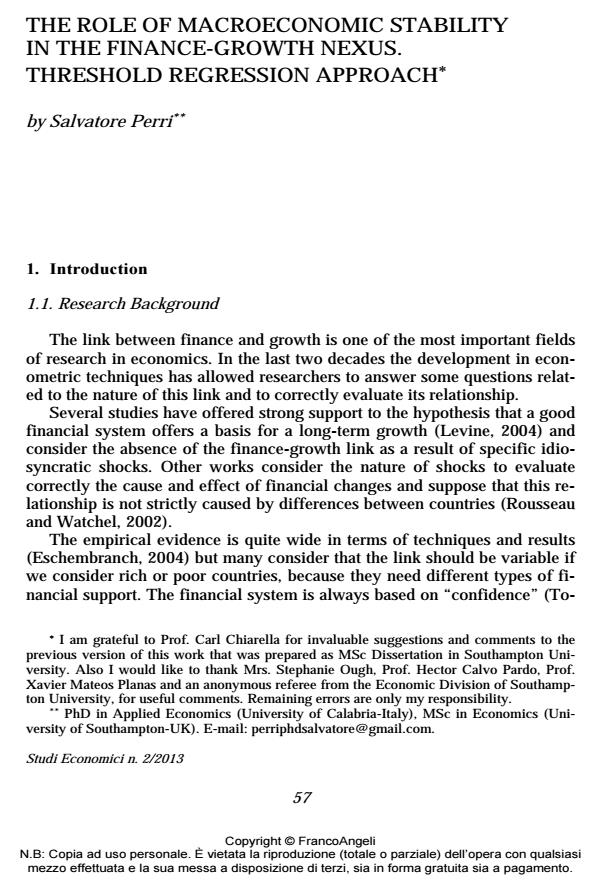The role of macroeconomic stability in the finance-growth nexus. Threshold regression approach
Titolo Rivista STUDI ECONOMICI
Autori/Curatori Salvatore Perri
Anno di pubblicazione 2014 Fascicolo 2013/110
Lingua Italiano Numero pagine 25 P. 57-81 Dimensione file 205 KB
DOI 10.3280/STE2013-110004
Il DOI è il codice a barre della proprietà intellettuale: per saperne di più
clicca qui
Qui sotto puoi vedere in anteprima la prima pagina di questo articolo.
Se questo articolo ti interessa, lo puoi acquistare (e scaricare in formato pdf) seguendo le facili indicazioni per acquistare il download credit. Acquista Download Credits per scaricare questo Articolo in formato PDF

FrancoAngeli è membro della Publishers International Linking Association, Inc (PILA)associazione indipendente e non profit per facilitare (attraverso i servizi tecnologici implementati da CrossRef.org) l’accesso degli studiosi ai contenuti digitali nelle pubblicazioni professionali e scientifiche
In this paper we analyse the link between Finance and Growth and, in particular, if this link is variable in respect to changes in the "Macroeconomic Stability". This topic was studied by many authors without any definite conclusion being reached. This paper considers the theoretical and the empirical problem in two ways: first, the evolution of the empirical literature, and a new empirical perspective to analyze that link. The research presented here attempts to answer this question using threshold methodology. It confirms previous analysis in respect to non-linearity of the relationship between finance and growth in international comparisons. The use of two different threshold variables confirms the complexity of this link and also the different mechanisms of transmission that operate inside different groups of countries. The use of the bank’s liquidity reserve ratio as a "stability" indicator suggests that probably the link between wealth and stability is not always enjoyed.
Parole chiave: Financial Development, Economic Development, Macroeconomic Stability, Threshold Effects
Jel codes:G00, E44, E06, O16
- Linear Models and Time‐Series Analysis pp.825 (ISBN:9781119432036)
Salvatore Perri, The role of macroeconomic stability in the finance-growth nexus. Threshold regression approach in "STUDI ECONOMICI " 110/2013, pp 57-81, DOI: 10.3280/STE2013-110004